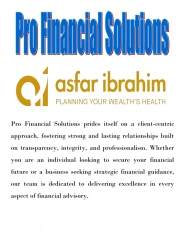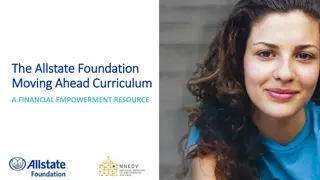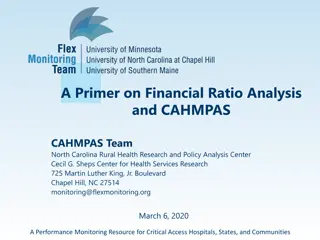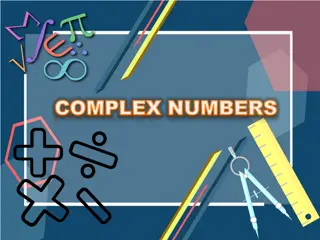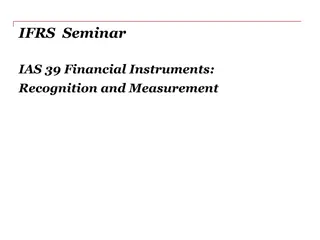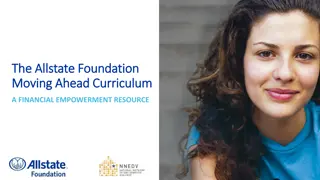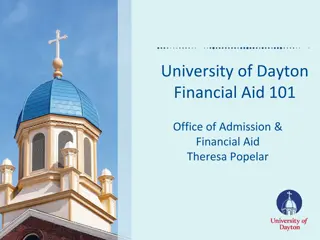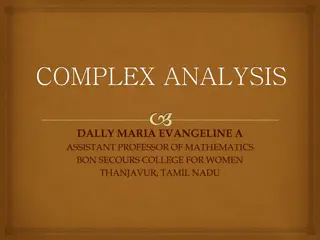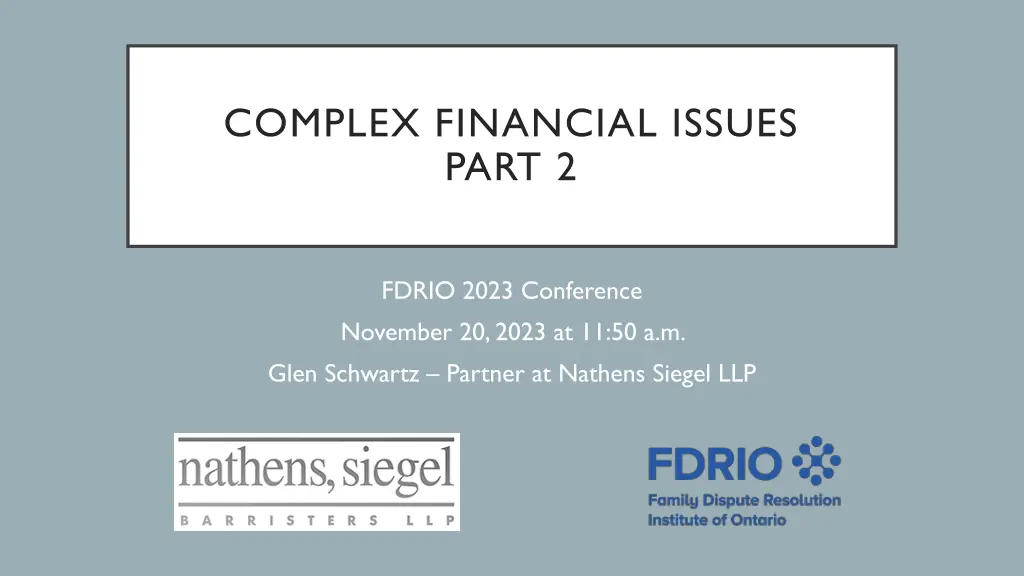
Understanding Family Trusts in Family Law Matters
Gain clarity on the interpretation of asset entitlements in discretionary family trusts, particularly in the context of family law proceedings. Explore key factors and recent caselaw that influence the valuation and treatment of discretionary trusts in fair and equitable settlements.
Download Presentation

Please find below an Image/Link to download the presentation.
The content on the website is provided AS IS for your information and personal use only. It may not be sold, licensed, or shared on other websites without obtaining consent from the author. If you encounter any issues during the download, it is possible that the publisher has removed the file from their server.
You are allowed to download the files provided on this website for personal or commercial use, subject to the condition that they are used lawfully. All files are the property of their respective owners.
The content on the website is provided AS IS for your information and personal use only. It may not be sold, licensed, or shared on other websites without obtaining consent from the author.
E N D
Presentation Transcript
COMPLEX FINANCIAL ISSUES PART 2 FDRIO 2023 Conference November 20, 2023 at 11:50 a.m. Glen Schwartz Partner at Nathens Siegel LLP
FAMILY TRUSTS CAN WE PLEASE GET SOME CLARITY? Courts interpret the true asset entitlement a beneficiary has in a DISCRETIONARY family trust very differently if the matter is a trust/estate matter vs.a family law matter. SCC stated in S.A v. Metro Vancouver Housing Corp [2019] SCC 4 for an asset to exist there has to be more than a mere hope a beneficiary will obtain the asset in the future. While there have been no recent Court of Appeal decisions in the family law context, the recent caselaw seems to suggest that the purpose of the Family Law Act must always form part of the analysis when interpreting whether the discretionary trust has a value to the beneficiaries or not.
FAMILY LAW TRIAL JUDGES SEEM TO SUGGEST: Fair and equitable settlement of overall property and support claims Must be treated on a case by case basis : Overall financial situation plays a major role in determining whether or not a discretionary trust will be included as an asset for division or not. ** However, control by beneficiary first needs to be proven** Sagl v.Sagl [1997] 31 R.F.L (4th) 405 (Ont.Gen.Div.) first Ontario case valuing an interest in a discretionary trust.
TREMBLAY V. TREMBLAY [2016] CARSWELLONT 922 Some factors to consider when determining if beneficiary has control can be found at para 32 of the decision: i. Any evidence with respect to the founding intent of the trust. Was the trust designed to effectively allow control by the beneficiary? ii. The composition of the trustees, including whether the beneficiary is a trustee; iii. Any requirement, including veto powers, that the beneficiary be part of any trustee decisions; iv. Any history of past trustee actions which demonstrate direct or indirect control by the beneficiary; v. Any powers of the beneficiary to remove trustees, or to appoint replacement or additional trustees; vi The relationship of the beneficiary to the trustees. Are the trustees independent and at arm s length or are they instead family members or other persons who may not act independently?
RESENDES V. MACIEL [2021] ONSC 6421 Motion for disclosure from the trust. Respondent argued disclosure was over-reaching as he was not a beneficiary, only a trustee and the beneficiaries could ask for an accounting of the trust. Applicant made arguments of the glaringly close connection between the trustee, trust itself, and beneficiaries akin to a sham trust argument, and the Applicant required disclosure to conduct a critique expert report as to the validity of trust. Justice Jain stated at paragraph 16: I agree with the applicant that although Tremblay was analysing the degree of control regarding a beneficiary of a trust,similar logic can be applied to a trustee in this case. In my view,the same contextual analysis can and should be used here to determine: the level of control; the proprietary character of the respondent's interest (if any) in the Trust; and/or the income of the respondent from theTrust.[emphasis added]
RESENDES V. MACIEL [2021] ONSC 6421 CONTINUED Justice Jain goes on to state at paragraph 18: I do not agree with the respondent that the applicant's requests are overreaching and/or irrelevant. In my view, the requests are relevant and proportionate to the circumstances of this case given the respondent's close financial connection as trustee of the Trust; three beneficiaries being the respondent's children (one being from the respondent's first marriage); and the fact that the respondent s activities as trustee, his business and income are all related. The court will need to be able to see whether the respondent intermingles his own assets and income with the Trust. Such interactions could show that the Trust is protecting some of the respondent's assets and/or some of his income and assisting the respondent in evading the fair division of property and/or evading his support responsibilities pursuant to the Family LawAct,R.S.O.1990,c.F.3 (FLA).
OTHER CONSIDERATIONS FOR PROPERTY CLAIMS Must be cognizant as to the fact that not all trust interests are excluded property . When was gift provided? (i.e. before v. after marriage) When was trust created, is it a sham trust are all notions to be mindful of when arguing if a trust interest is available for property division or not Even if family trust found to be an asset, still need to assess proper method of valuing said asset for family law purposes.
PRACTICE POINTS/TIPS Family Trusts can be used to hold interest in matrimonial home and therefore interest may be permitted to be excluded from a spouse s net family property. Matrimonial Home held validly by a family trust can be exempt from the provisions of Part II of the Family LawAct. New tax reporting rules in 2023: Trusts need to fileT3 s.Provides key info about trust. If your client as a beneficiary wishes to do his/her best to avoid his/her interest in a family trust from being included as property in the equalization calculation, it is best for the client/beneficiary NOTTO BEATRUSTEE!! TRUSTEE S SHOULDALSO BE ARMS LENGTH .
FAMILY TRUSTS AS INCOME FOR SUPPORT Section 19(1)(i) of the Guidelines allows for it Very fact specific analysis. Is income stream continuous? Discretionary? Pattern of gifts during relationship? Can always argue imputation of income due to recurring gifts even if trust income itself not capable of being imputed. Brinkos v. Brinkos (1989) 20 R.F.L. (3d) 445 did find that income streams can be treated as property as well if the income is not dependant on future services being provided.
CLAPP V. CLAPP [2014] 48 R.F.L (7TH) 329 (ONT. S.C.J.) Capital amounts itself received from trust not income in this case,however income generated from return of capital should be. Factors to consider when determining if amount is income or capital:Par 28 of Clapp states: a) Is the amount included in income for purposes of income tax? b) Is the amount capital that generates income? c) Is the amount,if capital,compensation for loss of income? d) Has the amount,if capital,been equalized,or is it exempt? e) Is the payment of the amount gratuitous? f) Is the payment of the amount recurrent? g) Were the funds typically used to finance a significant proportion of the recipient s living expenses?
BLEDIN V. BLEDIN [2021] ONSC 3815 Respondent payor is a beneficiary of a trust created by the estate of his mother. Arms length trustee. Trustee has sole discretion on disbursements made to payor. Justice Monahan found that capital disbursements to payor WERE INCOME. As amounts were provided tax free the amount imputed was grossed up for taxes when determining payor s income Court can impute income on income or other benefits received from a trust. This analysis goes towards the means of the parties. Paragraph 33 states: In fact,if the words "income or other benefits from the trust" did not extend to capital distributions paid or payable to a beneficiary,s.19 (1) (i) would have no practical effect.This is because amounts payable to a beneficiary out of the income of a trust are already taxable and included as line 150 income. By providing that income may be imputed on "income or other benefits" received or receivable from a trust, Parliament must have intended to go beyond amounts that are already taxable and permit inclusion of capital distributions as a "benefit" received from the trust.[ emphasis added]. Paragraphs 35 and 36 are as follows: [35] In contrast, in the case at bar the capital distributions to the Respondent were utilized in order to fund the parties living expenses during the marriage. In fact, as Table One above indicates, over 50% from the four years consisted of capital distributions from the Trust. These amounts were either paid to the Respondent or to third parties directly to cover the parties' ongoing expenses. [36] In my view, these are precisely the kinds of payments that s. 19 (1) (i) was intended to capture. Accordingly, I find that the capital distributions from the Trust to the Respondent are appropriately considered in the determination of his Guidelines income. Respondent's income over the past
CAPITAL GAINS SURPLUS STRIPPING- WHAT IS IT? It is a tax strategy which allows you reorganize shares of a company in order to distribute cash from a corporation as capital gains instead of as eligible or non-eligible dividends (which both have a higher tax rate than capital gains do). The original corporation will have to amend its articles of incorporation to create new classes of shares to conduct the reorganization with the new holding company created by the shareholder to effectuate the capital gains strip . Transfers of the newly formulated shares in the original company are sold to the new holding company at fair market value in exchange for a promissory note owing. Capital gains are triggered which must be reported on the payor s personal tax return. Assets from the original company can be used over time to repay the promissory note payable (i.e. through tax-free inter- corporate dividends to the holding company or by combining the two companies). Amounts received on account of the promissory note are not taxable. A recent case we had at our firm netted the following results: - Assuming top combined marginal income tax rates: i. The tax rate payable on non-eligible dividends would be 47.74% ii: The tax rate payable on eligible dividends would be 39.34% ii. The tax rate payable on capital gains (via capital gains strip) would be 26.76% In this scenario, the capital gains strip would mean a 20.98% tax savings if it was compared to non-eligible dividends or 12.58% tax savings if compared to eligible dividends.
IMPORTANT CRA DEADLINES: TAKE ADVANTAGE SOON! Complex transactions! Need to ensure you engage accounting experts and corporate lawyers to ensure it is done properly. The Department of Finance announced that changes to the Income Tax Act are coming! No capital gains strip will be allowed for transactions that occur on or after January 1, 2024. Client s should speak to accountants urgently to see if they can benefit from this before December 31, 2023.
ARE LIFE INSURANCE PREMIUMS A VALID BUSINESS EXPENSE FOR DETERMINING A PAYOR S INCOME? DEPENDS .. Income Tax Act allows a corporation to pay life insurance premiums on behalf of a shareholder. We all know that what CRA allows and what the FLA allows are two different things. Balance between what is allowed for under the Income Tax Act as a business owner and what is a fair income for support purposes. If life insurance is required by a shareholder for valid business reasons (i.e. to secure a business loan or other business obligations) then a strong argument can be made that it is an allowable expense and not added back to a payor s income. No Ontario cases found specifically on this point of deducting life insurance premiums. Cases involving a decision whether to allow a business deduction or not from a payor s income refer to reasonableness of business expenses and Sections 19 (1)(g) and 19(2) of the Guidelines
SECTION 19(1) AND 19(2) OF THE GUIDELINES 19(1) The court may impute such amount of income to a spouse as it considers appropriate in the circumstances, which circumstances include the following: ....(g) the spouse unreasonably deducts expenses from income 19(2) For the purpose of paragraph (1)(g), the reasonableness of an expense deduction is not solely governed by whether the deduction is permitted under the Income Tax Act. ONSC case of Doyle v. Doyle [2021] 4821: Justice M.J. Donohue does a good job of breaking down each claimed expense and determining whether or not they are valid deductions from a payor s income for support purposes.
RUSSELL V. ULLETT RUSSELL [2021] ABQB 769 Court found that 50% of the life insurance premiums were to be added back as the life insurance policy was for double the balance of his corporate obligations (in this case the mortgage balance owing on the company s building) If the court finds the life insurance policy was obtained more for personal reasons, the greater the likelihood all or at least part of the premiums will be added back to a payor s income and grossed up for taxation purposes.
THANK YOU!! Any questions or comments? Please feel free to reach out! Glen Schwartz gschwartz@nathenssiegel.com 416-222-6980 x2700

